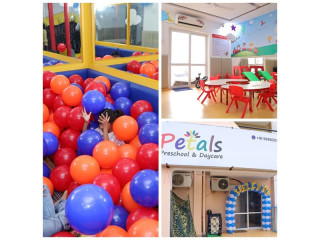Enhancing the Continuing Professional Development Process Private individual
3 weeks ago Learning Jalandhar 47 viewsLocation: Jalandhar
Price: Contact us
Enhancing the Continuing Professional Development (CPD) process involves creating a structured and dynamic approach to learning and growth. Here are some key strategies to enhance the CPD process effectively:
1. Establishing a Structured Framework
CPD Plan: Develop a comprehensive CPD plan that outlines your learning objectives, activities, and timelines. This plan should be regularly updated to reflect new goals and achievements.
Competency Framework: Align your CPD activities with a competency framework relevant to your profession. This ensures that your development efforts are targeted and impactful.
2. Diversifying Learning Methods
Blended Learning: Combine traditional learning methods with digital tools and online resources. Blended learning can include classroom training, e-learning modules, webinars, and interactive workshops.
Experiential Learning: Engage in experiential learning opportunities such as job rotations, internships, shadowing, and real-world projects. These experiences provide practical insights and skill enhancement.
3. Leveraging Technology
Learning Management Systems (LMS): Use LMS platforms to manage, track, and deliver CPD activities. Systems like Moodle, Canvas, and Blackboard can help organize learning materials and monitor progress.
E-Learning Platforms: Utilize online platforms like Coursera, Udacity, and Khan Academy to access a wide range of courses and learning materials.
Mobile Learning: Take advantage of mobile apps for learning on the go. Apps like Duolingo for language learning or Skillshare for creative skills provide flexible learning options.
4. Encouraging Collaborative Learning
Peer Learning: Foster a culture of peer learning and knowledge sharing within your organization or professional network. Peer reviews, study groups, and collaborative projects can enhance understanding and retention.
Mentorship Programs: Implement mentorship programs where experienced professionals guide and support less experienced colleagues. Mentorship can provide valuable insights, advice, and encouragement.
5. Emphasizing Reflective Practice
Reflective Journals: Maintain a reflective journal to document your learning experiences, challenges, and achievements. Reflective writing helps deepen understanding and informs future actions.
Regular Reviews: Schedule regular reviews of your CPD activities and progress. Reflect on what you have learned, how it has been applied, and what further development is needed.
6. Fostering a Growth Mindset
Encourage Curiosity: Cultivate a mindset of curiosity and continuous learning. Encourage exploring new ideas, taking risks, and embracing challenges.
Accepting Feedback: Promote an environment where constructive feedback is welcomed and used as a tool for improvement. Feedback from peers, supervisors, and clients can guide development.
7. Aligning CPD with Career Goals
Personalized Learning Paths: Tailor CPD activities to align with individual career aspirations and organizational needs. This ensures relevance and motivation.
Career Development Plans: Integrate CPD into broader career development plans. Outline long-term career goals and identify the CPD activities needed to achieve them.
8. Measuring and Evaluating Impact
KPIs and Metrics: Define key performance indicators (KPIs) and metrics to measure the impact of CPD activities. Track progress through performance reviews, skill assessments, and feedback.
Impact Analysis: Conduct regular impact analysis to evaluate the effectiveness of CPD activities. Use this data to refine and improve your CPD strategies.
9. Ensuring Support and Resources
Organizational Support: Secure support from leadership for CPD initiatives. This includes providing time, budget, and resources for CPD activities.
Access to Resources: Ensure access to up-to-date resources, including books, journals, online databases, and industry reports. Staying informed about the latest trends and best practices is crucial.
10. Promoting Well-Being
Work-Life Balance: Encourage a balance between professional development and personal well-being. Stress management, mental health support, and leisure activities are essential for sustained growth.
Holistic Development: Focus on developing both technical and soft skills. Emotional intelligence, communication, and leadership are critical components of professional success.
Conclusion
Enhancing the CPD process requires a strategic and multifaceted approach. By establishing a structured framework, diversifying learning methods, leveraging technology, and fostering a growth mindset, professionals can effectively enhance their skills and competencies. Regular reflection, alignment with career goals, and organizational support are also crucial for a successful CPD process. Ultimately, a well-rounded CPD strategy not only benefits individuals but also contributes to the overall effectiveness and competitiveness of organizations.












